EN

Coletivo MAAD © Andreia Merca
In the month that marks International Women's Day, Agenda Porto went to meet the MAAD Collective (Women Art Architecture & Design), responsible for the Feminist Tour of Porto. Isabeli Santiago, Alícia Medeiros and Chloé Darmon guide us through public places in Porto to remember the lives and works of women artists, writers and activists. Ana Plácido, Carolina Michaëlis, Virgínia Moura, Henriqueta da Conceição and Gisberta Salce are just some of the names on the route. As they walk, they leave ephemeral memories.
In the month that marks International Women's Day, Agenda Porto went to meet the MAAD Collective (Women Art Architecture & Design), responsible for the Feminist Tour of Porto. Isabeli Santiago, Alícia Medeiros and Chloé Darmon guide us through public places in Porto to remember the lives and works of women artists, writers and activists. Ana Plácido, Carolina Michaëlis, Virgínia Moura, Henriqueta da Conceição and Gisberta Salce are just some of the names on the route. As they walk, they leave ephemeral memories.
Isabeli, assistant curator at Galeria Municipal do Porto since 2019, and Alícia, architect, artist and independent researcher, met in 2016 and wanted to bring their work and practices together: During her Master's degree in Art and Design for Public Space at FBAUP, Alícia developed research on walking as an artistic practice, while Isabeli, as part of her degree in Art History (FLUP), had already designed routes in the city based on the memory of women such as Sophia de Mello Breyner Andresen, Carolina Michaëlis, Rosalia de Castro, local historical archives and literature. Their involvement in feminist collectives led to the first guided tour in 2019, during the now-defunct Porto Feminist Festival.
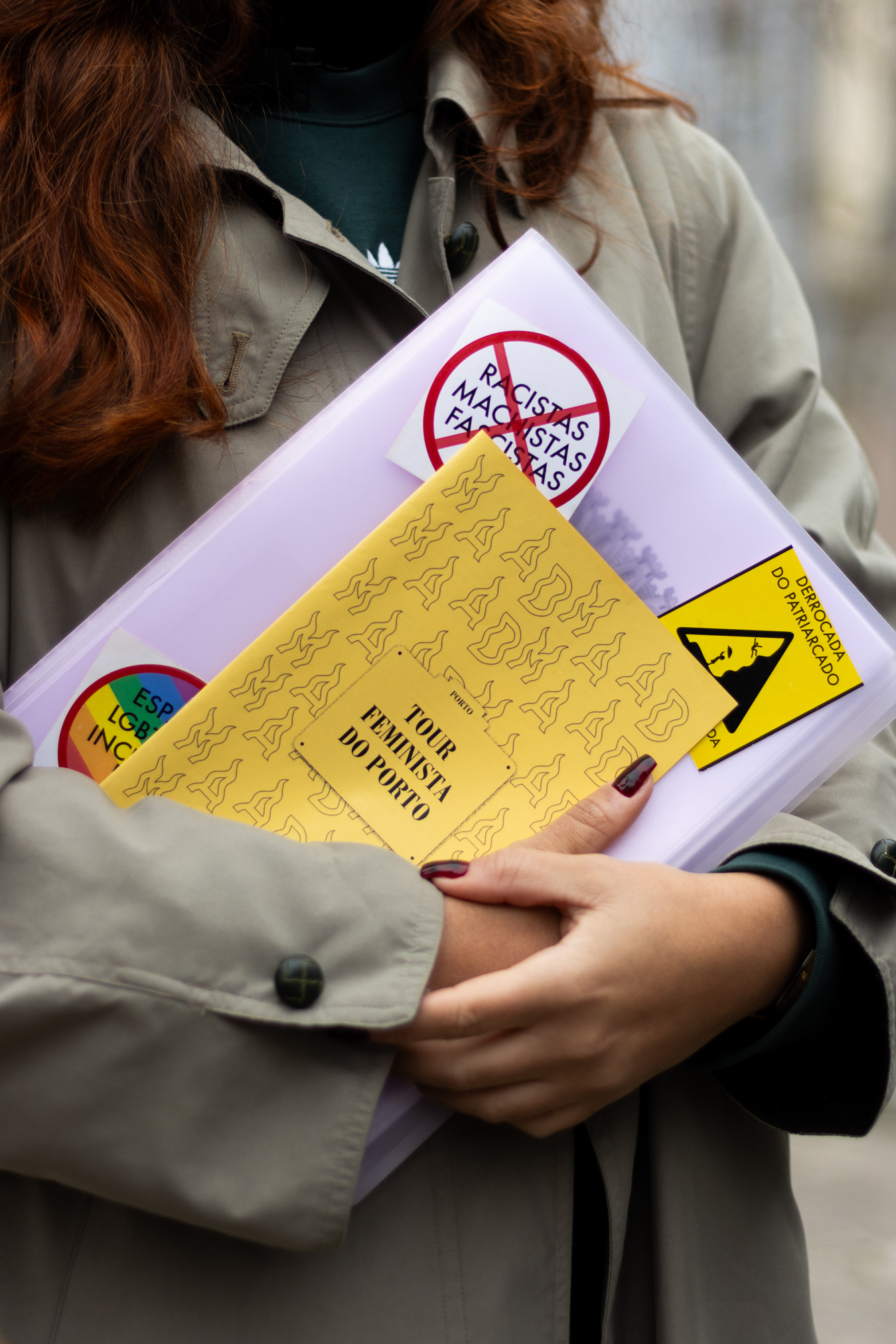
Tour Feminista do Porto © Andreia Merca
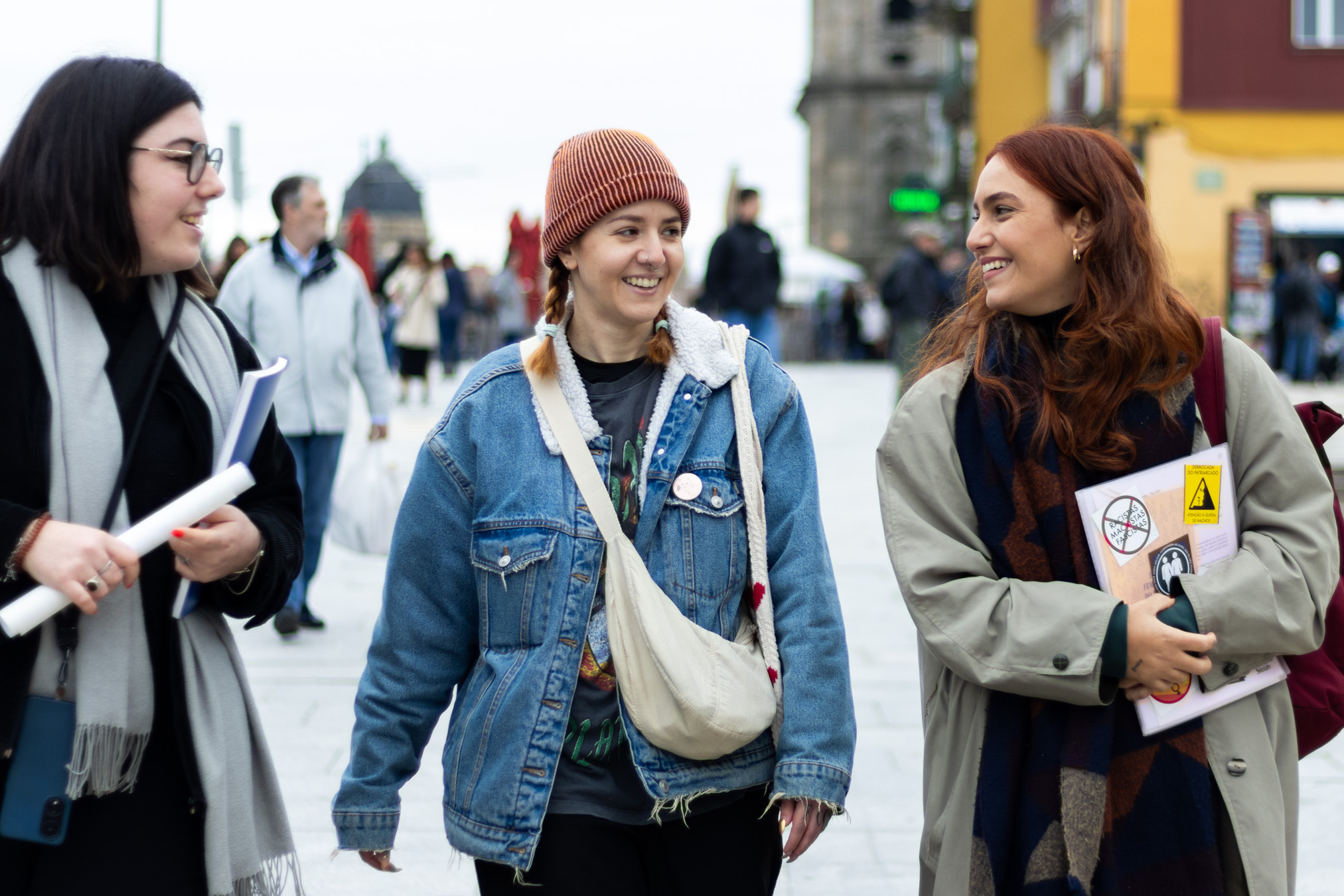
Chloé Darmon, Alícia Medeiros e Isabeli Santiago © Andreia Merca
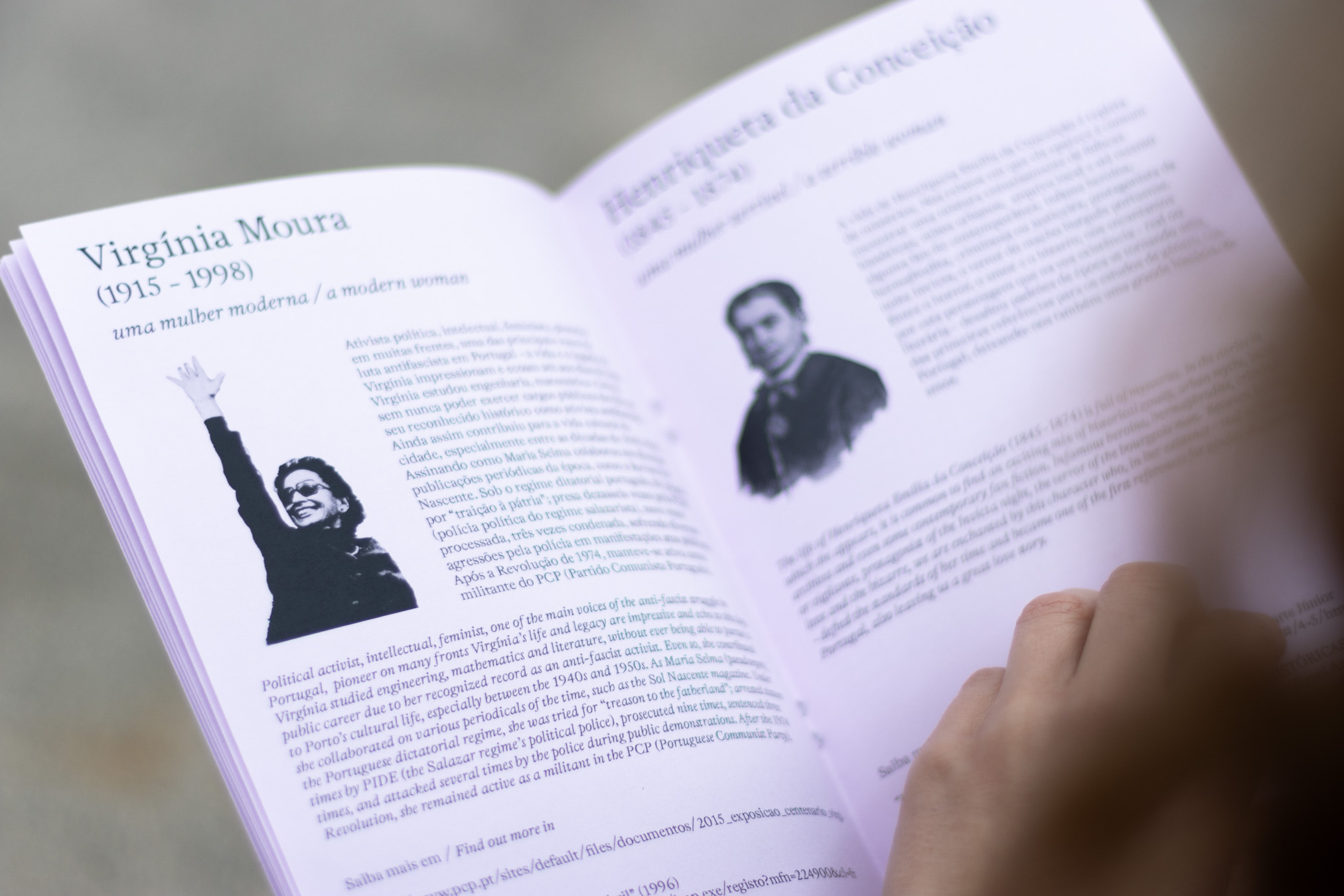
Caderno da Tour Feminista do Porto criado pelo Coletivo MAAD © Andreia Merca
At the time, they invited curator and researcher Laurem Crossetti, ‘who was interested in practices in public spaces and also wanted to create alternative tours’, and from there, as the MAAD Collective, they drew up an itinerary.
‘It was from the combination of Alícia's research and knowledge as an architect and research artist [she has a PhD in Fine Arts from FBAUP, with a thesis entitled Walking for it: Walking as an artistic practice in mobile media cities: a poetic resistance to gender violence] that we adapted the tour format and the experience in public space,’ emphasises Isabeli, adding that her contribution was related to the historical survey, based on local toponymy, articulated with previous research she had already carried out during her bachelor's and master's degrees.
Together, they ‘shaped the narrative framework, combining architectural theory, art theory and history, artistic methodologies, experimental and feminist pedagogies, frameworks and practices of feminist historiography’.
In the meantime, the collective grew and began to count on the collaboration of Chloé Darmon, a French architect and author of a mapping project entitled ‘Inhabiting Water’, in which she explores the historical relationships between women, water, domestic labour and rurality in the city of Porto and its public washhouses.
‘The tour is an end and a means, which brings together strategies that allow for the recovery, creation and sharing of women's stories in and of the city of Porto,’ says Isabeli, an art historian and PhD candidate in Feminist Studies at the Faculty of Letters of the University of Coimbra. ‘These itineraries are based on an attempt to understand Porto through the history of women, who are apparently invisible in the city's visual culture, and, at the same time, on the desire to work on orality in order to ephemerally inscribe these stories in the city, which then continue their life in an immaterial archive shared between the people who walk with us,’ she explains.
Porto Feminist Tours usually take place between spring and early autumn, when the weather is more conducive to walks, and the MAAD Collective offers four different routes, which can last up to four hours: the historical route, the femi-literary route, the decolonial route and the washhouse route, the latter by Chloé Darmon, who has been a member of MAAD since 2024. The historical route is ‘the most popular’ and the one that happens most often.
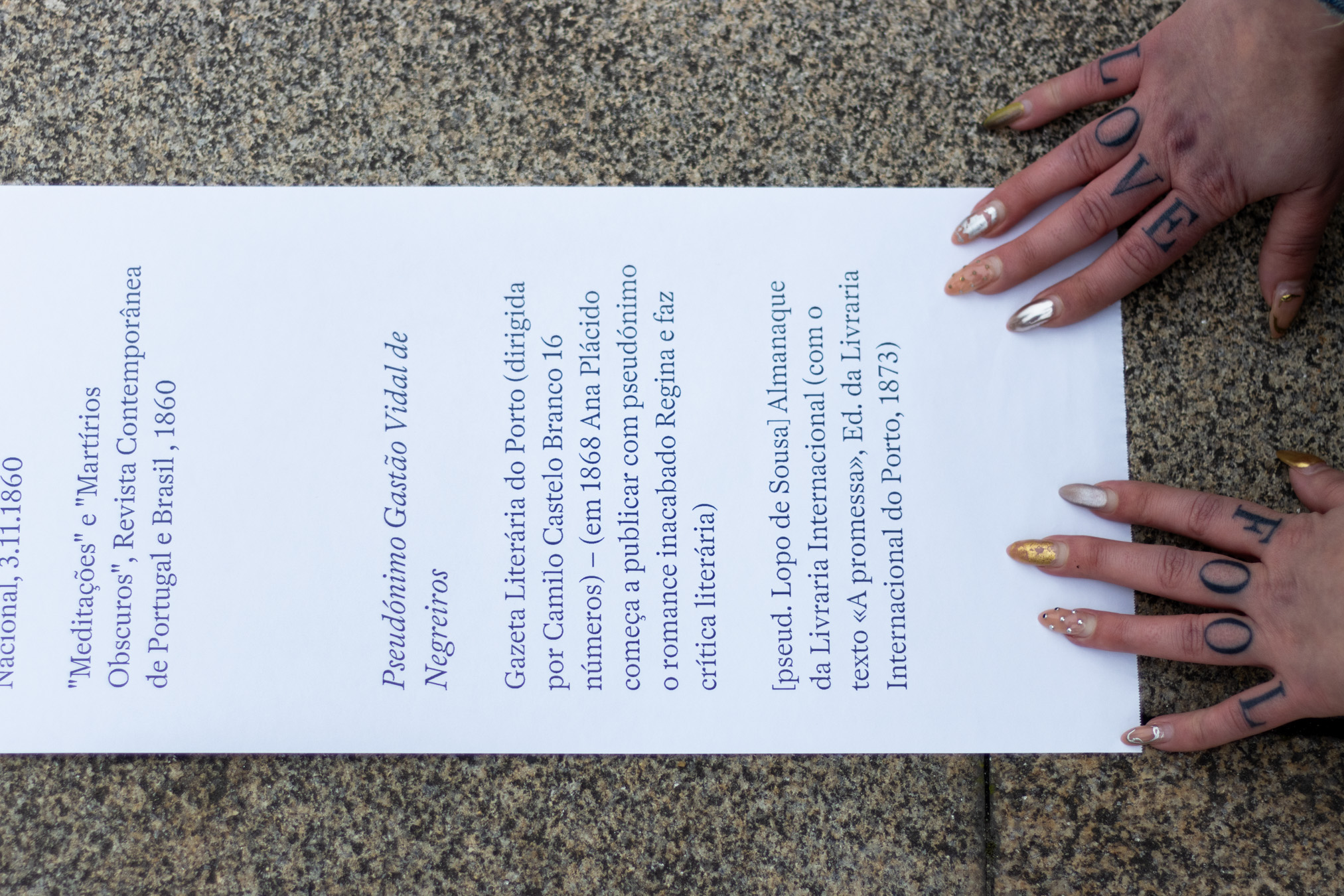
Informações sobre obras de Ana Plácido afixadas junto à estátua "Amores de Camilo" © Andreia Merca
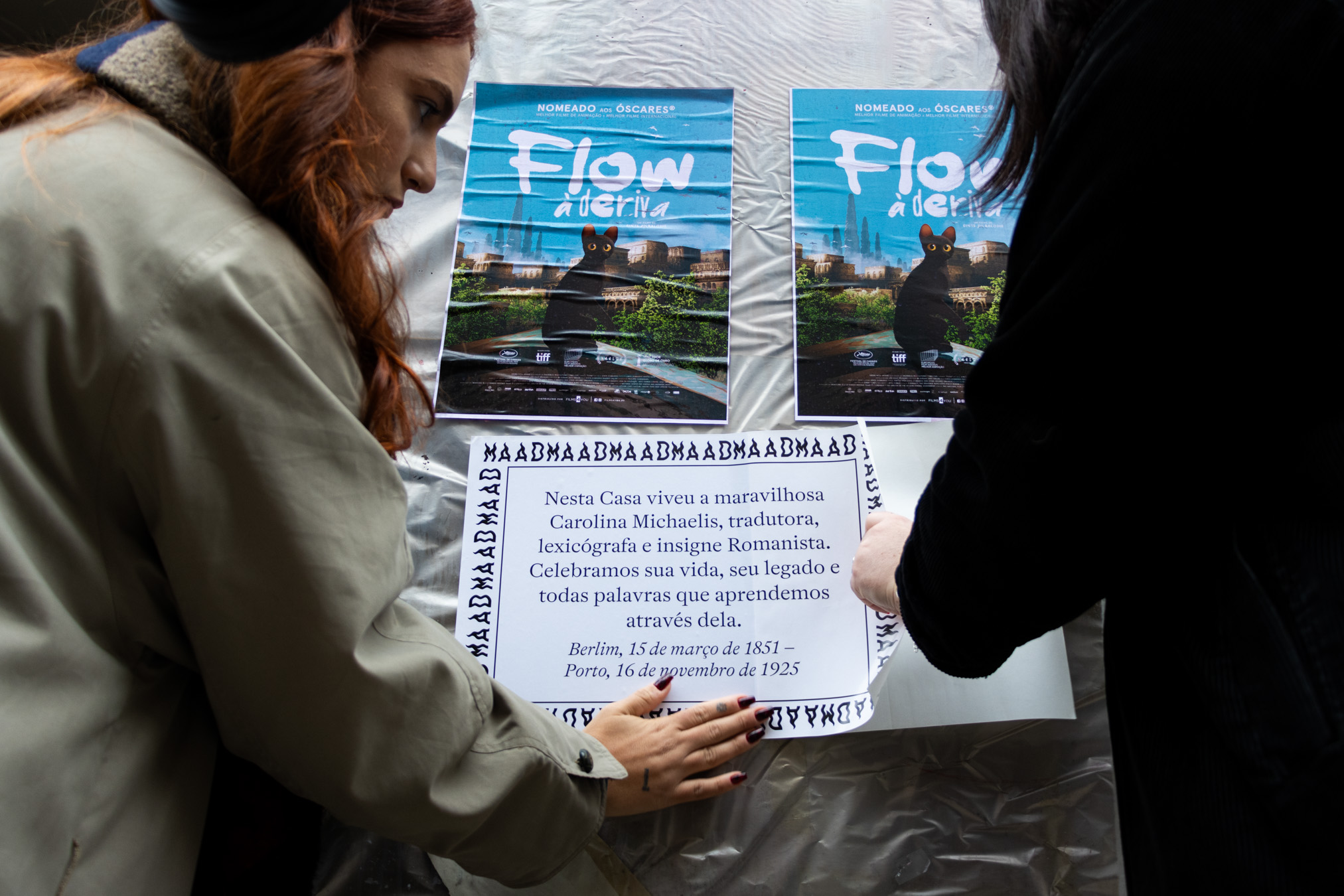
Afixação de cartaz alusivo a Carolina Michaëlis no rés-do-chão da casa onde viveu © Andreia Merca
The material representations of women in the public space, namely toponymy, public art, graffiti and artistic interventions, as well as the local stories they collect through oral transmission, are criteria for the inclusion of a particular location on the Feminist Tour, considering the different routes. ‘The testimonies of the people who walk with us and which are relevant, the need for artistic intervention, as well as silences, exclusions and invisibilities’ are also taken into account.
Intervention in the public space: an activist performance
Feminist Tours don't just inform and contemplate. They also have an interventionist and activist side, through the ephemeral marks they usually leave in the public space, such as stickers and posters. ‘We try to intervene in the public space to leave a visual presence in the landscape,’ thus alerting people to “landmarks and invisibilities in the public space,” as Isabeli explains. ‘The action of the tour itself ends up standing out in the landscape, like an activist performance in the city.’
Sometimes, the Collective also distributes stickers so that people taking part in the tours can intervene in other places in the city where episodes of ‘sexist, racist or lgbtqiphobic violence’ have occurred.
Carolina Michaëlis: a rare tribute to a real woman
On the map of the tour is number 159 R. de Cedofeita, the house where Carolina Michaëlis (1851-1925) lived and died, and which is now local accommodation. A plaque at the top, which is barely legible, points out that the novelist, philologist, lexicographer and historian lived there.
‘Carolina Michaëlis is a counterpoint that we consider positive in terms of [women's] representation in the public space because, in fact, the house where she lived has a plaque, recognising her as a ‘distinguished citizen’,’ says Isabeli, noting that the school named after her also has a bust “representing her age, more mature, with wrinkles and facial expressions, and opposing the idealisation of beauty”. The activist also points out that, in the city's toponymy, Carolina Michaëlis is ‘one of the few [female] names that correspond to real figures’, the rest being the names of Catholic saints, and adds ‘a curious fact’: in the list of all the names of metro stops, it is the only name of a real female figure.
Isabeli also emphasises that ‘the movement to pay tribute to or recognise “real” women in toponymy is recent’. ‘As a result, many of these tributes are generally found in peripheral areas of the city and don't correspond to streets or facilities that feature prominently in the plot,’ she says, adding that we still see “female representations as allegories, often represented in a sexist way, or exaggeratedly sexualised without need”, as is the case with Amores de Camilo, by sculptor Francisco Simões, in which Ana Plácido [a Portuguese writer who was the lover of the famous Portuguese writer Camilo Castelo Branco] is represented very young and naked.
The Amores de Camilo statue, in Largo Amor de Perdição, is precisely one of the stops on the Porto Feminist Tour because ‘it allows us to discuss the representation of women in the public space and throughout the history of art’, as Isabeli explains. Check it out in the video below.
Women in toponymy: between invisibility and idealisation
Chloé Darmon recalls the book Toponímia Feminina Portuense, by César Santos Silva, which shows that only 1.5 per cent of the city's streets are named after real women. For Chloé, these figures are symptomatic of the ‘invisibility of women’ in the public space.
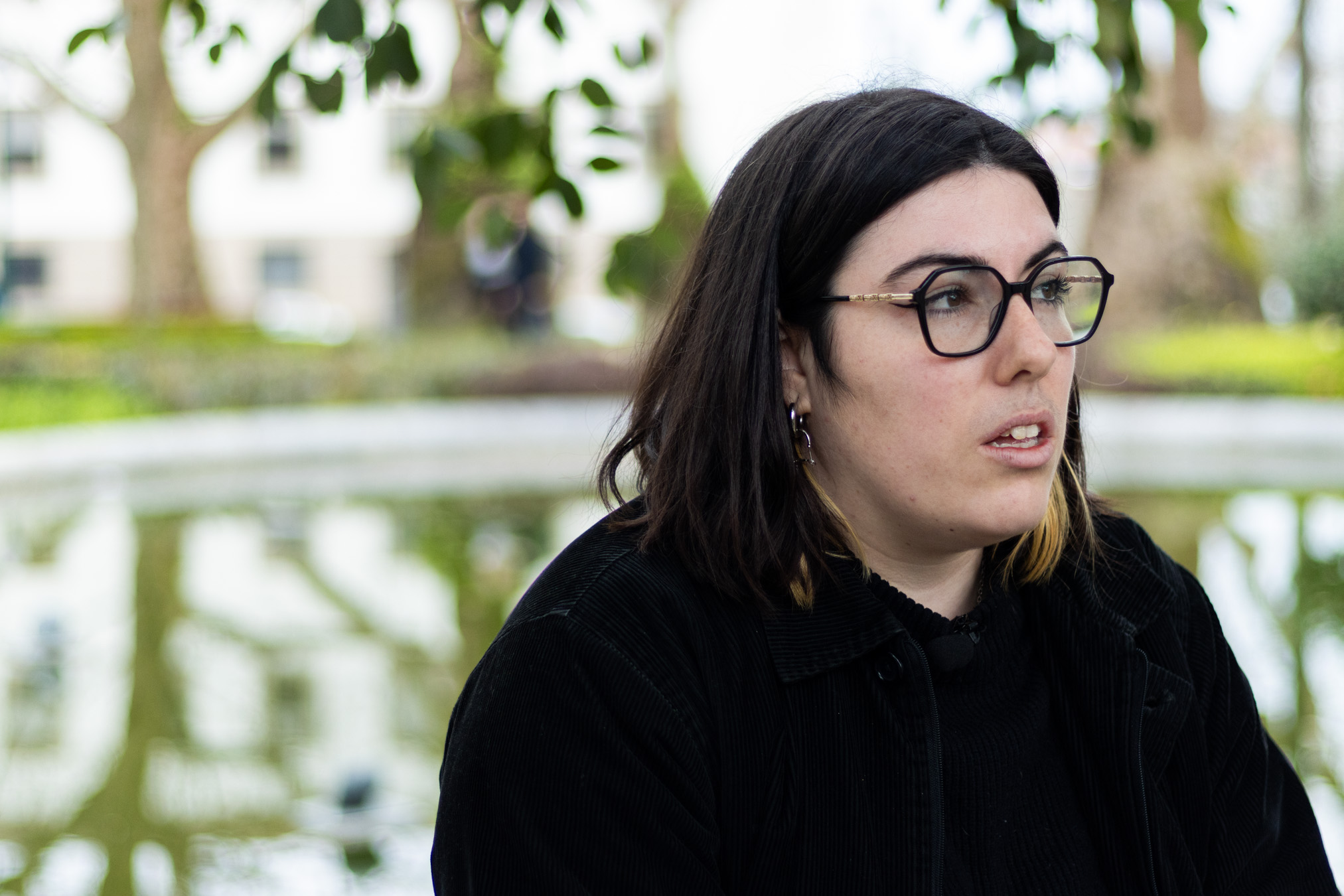
Chloé Darmon © Andreia Merca
Share
FB
X
WA
LINK
Relacionados


